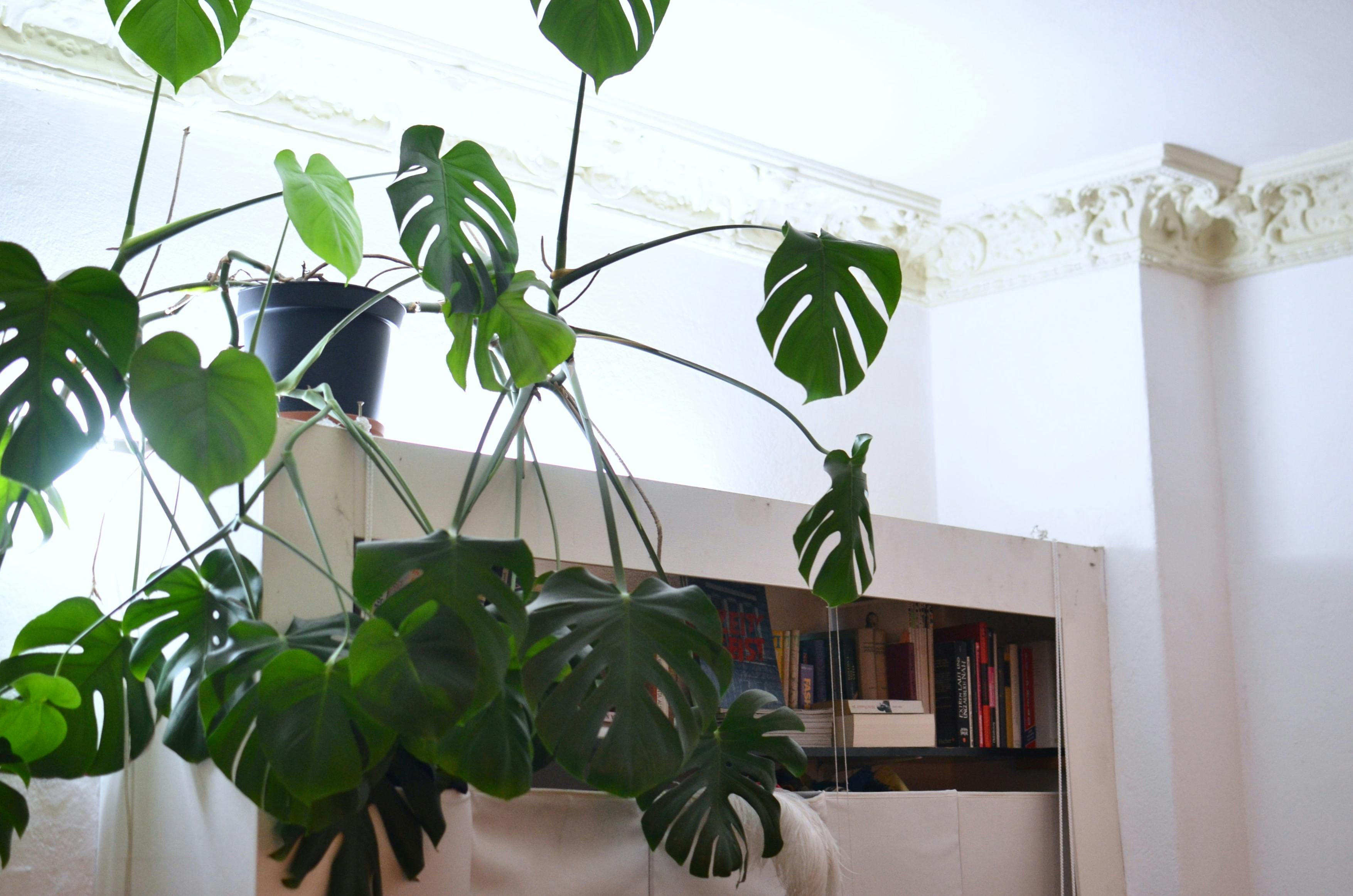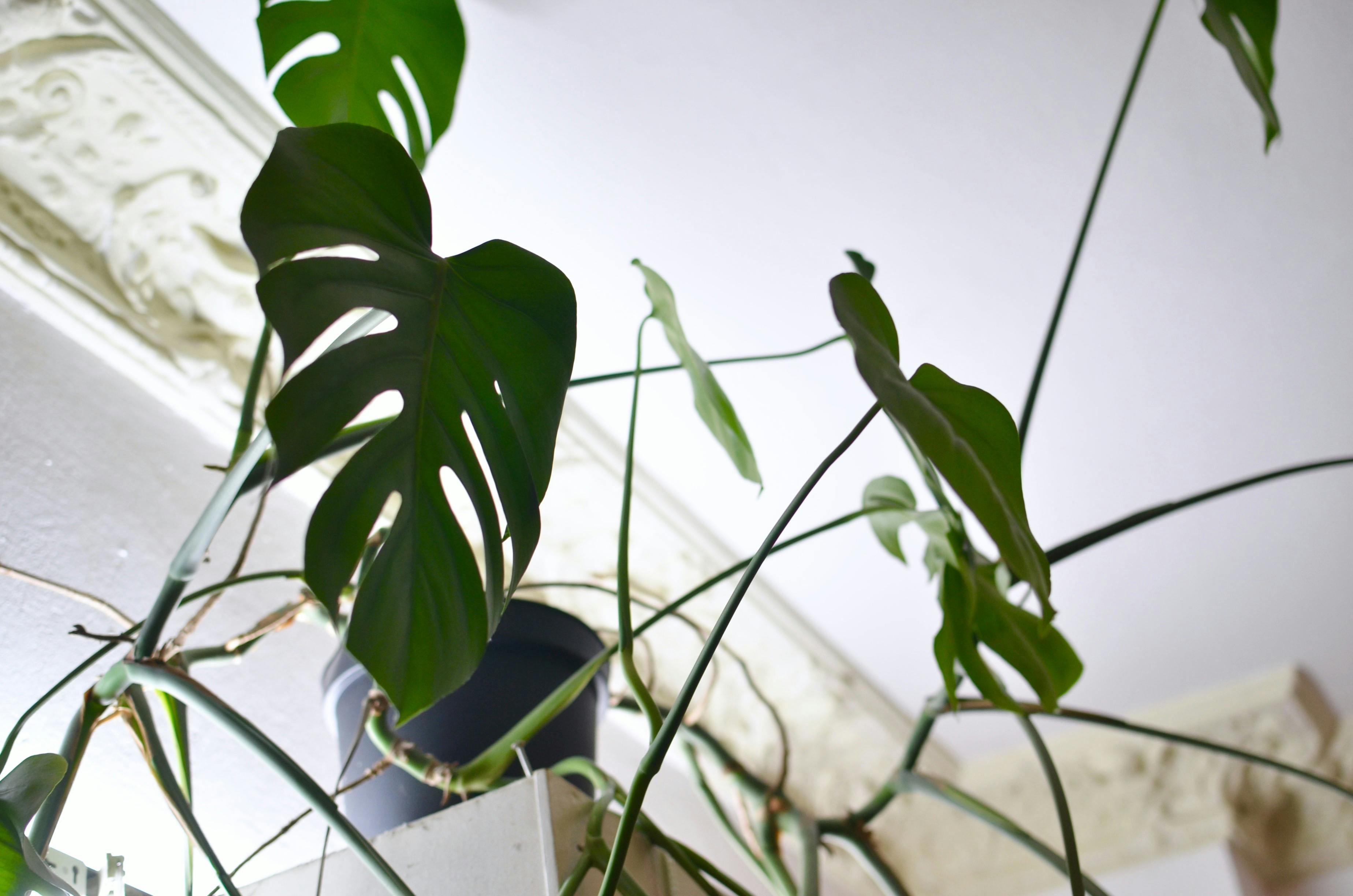Monstera plants are a popular choice of houseplant for many home and office spaces due to their striking foliage and relatively low maintenance needs. One of the most important elements of Monstera care is providing the correct amount of light. Too much or too little light can cause damage to the leaves and affect the health of the plant. This article will discuss how much light a Monstera plant needs in order to thrive.Monstera plants prefer bright, indirect light. They will tolerate low light but may not grow as quickly and will not produce their signature split leaves. Direct sunlight should be avoided as it can burn the leaves.
How Much Sunlight Do Monstera Plants Need?
Monstera plants are a popular houseplant because of their lush foliage and easy care requirements. While they do need some sunlight, they don’t require direct sun to thrive. Monstera plants prefer bright, indirect light, meaning they should be placed near an east- or south-facing window or in a space that receives bright, ambient light throughout the day.
If you place your Monstera plant in direct sun, it will likely suffer from sunburn or scorched leaves. Additionally, direct sunlight can cause the foliage of your plant to become faded or discolored. To prevent this, make sure to keep your plant out of direct sunlight and away from hot windowsills.
Monstera plants are also tolerant of lower light conditions. If your home doesn’t get much natural light, you can supplement with fluorescent lights or LED grow lights to ensure your plant is getting enough light for optimal growth and health. You can also move your Monstera plant outdoors during the summer months, as long as it’s in a shaded spot that doesn’t receive direct sunlight for more than a few hours each day.
Overall, Monstera plants are not overly fussy when it comes to their lighting needs and can thrive in a variety of settings with proper care. Make sure to monitor your plant for signs of sunburn or over-exposure, such as yellowing leaves or burned edges on the foliage. With the right amount of bright, indirect light and regular watering and fertilizing, you’ll have a lush and healthy Monstera plant for years to come!
How To Determine The Right Light For A Monstera Plant?
Monstera plants require bright, indirect light to thrive and to bloom. You can achieve this by placing the plant near a window that gets plenty of light but not direct sunlight. If you place your Monstera in direct sunlight, it can cause the leaves to burn and eventually die. It’s important to find the right balance of light for your Monstera, as too much or too little light can cause the leaves to yellow and drop off.
To ensure your Monstera is getting the right amount of light, you should monitor the leaves for any signs of discoloration or wilting. If you notice any signs that your plant is not receiving enough light, you should move it closer to a window or use artificial lighting to supplement its needs. On the other hand, if you notice any signs that your Monstera is receiving too much light—such as yellowing or brown spots on the leaves—you should move it further away from a window or reduce the amount of artificial lighting.
When determining how much light your Monstera needs, it’s important to consider how much time it spends outdoors—if any—and how close it is situated to a window. You may need to adjust its position if you find that it’s not getting enough or too much light. Additionally, if you live in an area with extreme temperatures and changing seasons, you may need to adjust its placement throughout the year so that it receives enough but not too much light.
Overall, finding the right balance of light for your Monstera plant can be tricky but with some trial and error and careful monitoring of its environment, you can ensure that your plant receives all the sunlight it needs for optimal health.
Is Too Much Light Unhealthy For A Monstera Plant?
Monstera plants are tropical, epiphytic evergreens that can be grown both indoors and outdoors. While they need ample light to survive, too much light can be unhealthy for them. The amount of light a Monstera needs depends on the variety, as some varieties are more shade-tolerant than others. In general, Monsteras prefer bright, indirect light but should not be exposed to direct sunlight for extended periods of time. Too much direct sunlight can cause sunburn or scorched leaves, leading to discoloration and loss of foliage.
When grown indoors, a Monstera should be kept away from windows that get direct sunlight in order to prevent damage from the intense rays. A few hours of bright morning or late afternoon sunlight is beneficial for the plant and will encourage new leaf growth. However, if you notice the leaves of your Monstera turning yellow or wilting, it could be a sign that it is receiving too much light. If this is the case, move your plant to a shadier spot in your home where it will still receive some natural light each day.
Plants that are grown outdoors may also suffer from sunburn if exposed to too much direct sunlight so it’s important to find a spot that offers protection from the midday sun and afternoon heat. A good rule of thumb is to keep Monsteras in dappled shade throughout the day and provide some protection during periods of extreme heat or cold. Be sure to check your plants regularly for signs of distress so you can take action quickly if needed.
Where Is The Best Place To Put A Monstera Plant For Optimal Lighting?
When it comes to finding the best place to put a Monstera plant for optimal lighting, it’s important to consider the type of light that your plant needs. Monstera plants thrive in bright indirect light, so it’s best to place them somewhere that gets plenty of sunlight but is not in direct contact with the sun. Ideally, you should find a spot near an east or west-facing window where the plant can receive bright but indirect light throughout the day.
If you don’t have access to a window with good lighting, you can also use artificial lighting such as fluorescent bulbs or LED lights. When using artificial lighting, be sure to place the lights at least 12 inches away from your plant so that it won’t be burned by the heat of the bulbs.
Another important factor to consider when choosing a spot for your Monstera plant is temperature. Monstera plants prefer warm temperatures between 65 and 80 degrees Fahrenheit. If you live in an area with temperatures that tend to fluctuate drastically, it’s best to find a spot for your plant where temperatures remain relatively consistent throughout the day and night. This could be near a window, near a heating vent, or even on top of a piece of furniture away from windows and air vents.
Finally, make sure that wherever you choose is free from drafts or direct airflow as this can cause stress on your Monstera plant and lead to poor growth and health. With these tips in mind, finding the best place for your Monstera plant should be easy!

Different Types Of Lighting Suitable For A Monstera Plant
Monstera plants are popular houseplants that can range in size from a few inches to several feet. They require a bright spot with indirect sunlight and adequate humidity to thrive. The type of lighting suitable for a Monstera plant depends on its location, the amount of direct sunlight it receives, and the size of the plant.
For Monstera plants located indoors, it is best to provide artificial lighting such as full-spectrum fluorescent bulbs or LED bulbs. These bulbs will provide the necessary light for photosynthesis and also help keep the plant healthy. If possible, locate the plant near a window that receives indirect sunlight for several hours each day. This will help supplement the artificial lighting and ensure that your Monstera gets enough light.
For larger Monstera plants located outdoors, they will need more natural light than those kept indoors. If possible, place them in an area that receives at least 6-8 hours of direct sunlight each day. If this is not possible, you may need to supplement their light with grow lights or other artificial lighting sources.
No matter where you keep your Monstera plant, it is important to monitor its environment and adjust the lighting accordingly. Too much direct sunlight can cause burning and too little light can cause stunting of growth or other issues. Providing adequate light is essential for keeping your Monstera healthy and thriving!
Adequate Lighting for a Monstera Plant
Adequate lighting is essential for the health of a Monstera plant. Proper lighting helps promote healthy growth, flowering, and overall vitality of the plant. Without adequate light, a Monstera plant may become weak and eventually die. With proper lighting, however, this beautiful houseplant can thrive and bring life to any space.
Monstera plants prefer bright indirect or filtered sunlight that is not too intense or direct. A south-facing window with sheer curtains is an ideal spot for the Monstera to receive indirect sunlight throughout the day. Avoid any direct sunlight as this can cause the leaves to scorch and burn.
In addition to providing adequate light, proper lighting also helps with flowering and fruiting of the plant. The Monstera produces fragrant flowers which can develop into delicious fruits in optimal conditions. With enough light, flowers will begin to bloom in late summer or early fall and will help attract beneficial pollinators like bees and butterflies into your home or garden.
Adequate lighting also helps regulate temperatures in your home or garden. By absorbing heat from the sun’s rays, it helps maintain a comfortable temperature range for both you and your Monstera plant. Additionally, adequate light allows your Monstera to perform photosynthesis more efficiently which will help it produce more energy needed for growth.
By providing your Monstera with proper lighting conditions you can ensure that it remains healthy and vibrant for many years to come!
Not Receiving Enough Light
If a Monstera plant doesn’t receive enough light, it will start to stretch out and become leggy. The leaves will begin to lose their variegation and the leaves will be smaller than normal. The plant may also produce aerial roots as a way of seeking more light, but it can also cause the plant to become more sensitive to drafts or sudden changes in temperature. Without enough light, the plant’s growth will slow down significantly and it may not flower or produce fruit.
In order to keep your Monstera healthy, it is important to provide the right amount of light for it. If you are unable to provide direct sunlight, then you should ensure that there is bright indirect light available for the plant. You should also avoid placing the plant in an area with drafts or sudden changes in temperature as this can negatively affect its health.

Conclusion
Monstera plants need a good amount of bright, indirect light. In order to ensure that the Monstera is getting enough light, it should be placed in an area that gets at least four hours of direct sunlight each day. The plant should also be kept away from drafts and other sources of extreme temperatures. If the Monstera is receiving too much light, it can cause leaf burn and wilting leaves. On the other hand, if the plant is not receiving enough light then it won’t grow properly and can become leggy or weak.
Overall, Monstera plants need an environment with just the right amount of bright, indirect light for optimal growth. With proper care and attention, your Monstera will thrive for many years to come!

